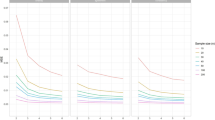Abstract
Appropriate sampling, that includes the estimation of measurement uncertainty, is proposed in preference to representative sampling without estimation of overall measurement quality. To fulfil this purpose the uncertainty estimate must include contribution from all sources, including the primary sampling, sample preparation and chemical analysis. It must also include contributions from systematic errors, such as sampling bias, rather than from random errors alone. Case studies are used to illustrate the feasibility of this approach and to show its advantages for improved reliability of interpretation of the measurements. Measurements with a high level of uncertainty (e.g. 50%) can be shown to be fit for some specified purposes using this approach. Once reliable estimates of the uncertainty are available, then a probabilistic interpretation of results can be made. This allows financial aspects to be considered in deciding upon what constitutes an acceptable level of uncertainty. In many practical situations ”representative” sampling is never fully achieved. This approach recognises this and instead, provides reliable estimates of the uncertainty around the concentration values that imperfect appropriate sampling causes.
Similar content being viewed by others
Author information
Authors and Affiliations
Additional information
Received: 28 December 2001 Accepted: 25 April 2002
Rights and permissions
About this article
Cite this article
Ramsey, M. Appropriate rather than representative sampling, based on acceptable levels of uncertainty. Accred Qual Assur 7, 274–280 (2002). https://doi.org/10.1007/s00769-002-0489-4
Issue Date:
DOI: https://doi.org/10.1007/s00769-002-0489-4




